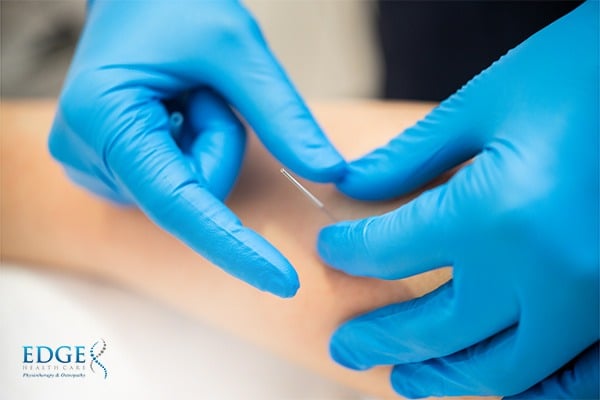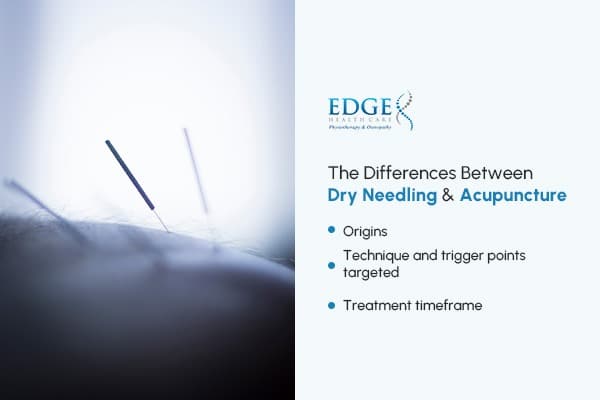
What are the differences between dry needling and acupuncture? At first glance, both modalities may appear similar, as the two treatments involve the insertion of thin, fine filament needles into strategic locations in the body to alleviate pain and muscle tension. As a result, many people often mistake the two treatments as identical and use both terms interchangeably.
However, both modalities are actually separate, distinct treatment methods used to treat different conditions. Let us provide an in-depth comparison of dry needling and acupuncture to prevent any confusion and allow you to make an informed decision on which treatment method is more suitable for you.
Dry needling vs. acupuncture

Difference #1: Origins
Acupuncture is an ancient Chinese therapeutic practice that dates back thousands of years and is generally administered by licensed acupuncturists. With roots in Traditional Chinese Medicine (TCM), which believes that imbalances or blockages in the body’s vital energy, known as Qi (pronounced “chee”), can contribute to physical and mental health issues, the fundamental goal of this treatment is to balance the flow of Qi to promote healing by inserting needles into specific points on the body, called acupoints.
Conversely, dry needling is a more recent addition to the field of manual therapy, and it is rooted in Western medicine and anatomy, with a focus on the musculoskeletal system. Its primary objective is to release trigger points or muscular knots that can cause pain and discomfort, with the treatment typically performed by a physical therapist.
Difference #2: Technique and trigger points targeted
With the point of origin for both modalities differing, it is only natural that there will also be differences in techniques and needle insertion. During an acupuncture session, a trained practitioner will target the body’s precise acupoints corresponding to the patient’s health concerns. Subsequently, the needles are left in place for a designated period, during which they may be manually stimulated by the acupuncturist via gentle twisting or tapping motions to stimulate Qi flow, thus promoting overall well-being and alleviating pain.
Meanwhile, dry needling typically involves deeper penetration of the needles to reach the myofascial trigger points and elicit a localised response in the muscle, with no additional manipulation performed. As a result, the needles are usually inserted and removed relatively quickly compared to acupuncture.
The twitch response stimulated during dry needling treatment helps relax the tight muscle fibres and release tension, reducing pain, improving range of motion, and enhancing muscle function in affected areas. Due to its effectiveness in treating musculoskeletal pain, dry needling is often recommended as back or neck pain treatment.
Difference #3: Treatment timeframe
Patients who have undergone both modalities will immediately notice the difference in the timeframe for both treatments. Dry needling often uses fewer needles than acupuncture does, with the needles being inserted into the body for a shorter period of time. As such, dry needling is often shorter than a single session of acupuncture, which usually lasts between 30 minutes to 1 hour.
Which treatment is more suitable for me?
After learning more about dry needling and acupuncture, you may wonder which treatment is more suitable. The answer to this question depends on the condition afflicting your body. For example, dry needling might be ideal for those experiencing symptoms of muscle dysfunction, as the needle penetrates all the way down into the muscle itself, eliciting a twitch response that releases muscular tension and improves blood flow to the affected area.
Conversely, acupuncture offers a more natural solution for symptoms related to systemic conditions, such as allergies, dizziness, or nausea. While it is also effective at treating chronic pain, it depends on where the pain originates. For pain that is localised to the shoulder, dry needling might be more directed and effective.
However, if you remain undecided, your best option is to consult our physical therapists to determine which approach is suited to your specific needs. Our qualified practitioners can assess your condition and assist you in selecting the treatment that best aligns with your health and wellness goals. Rest assured that our physiotherapy clinics are located centrally in Singapore, so you can choose the centre located nearest to you.


